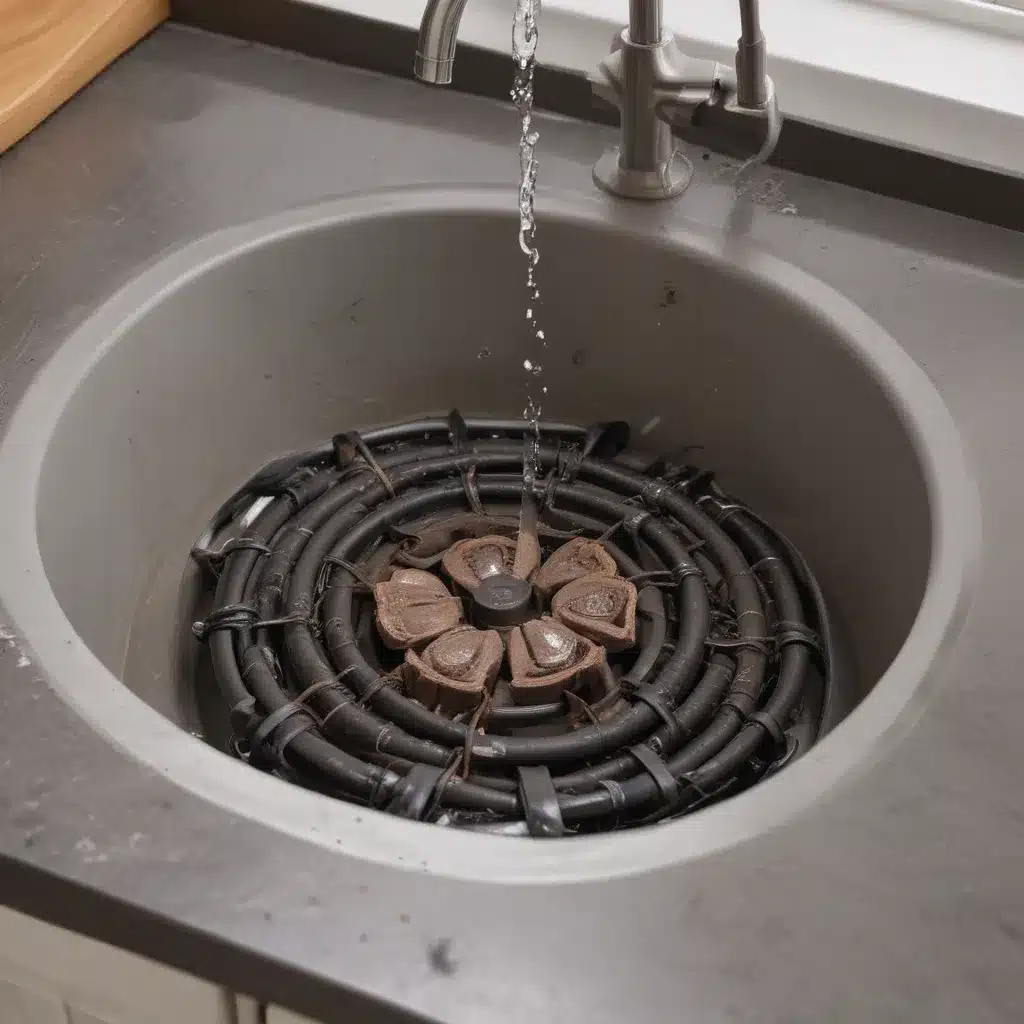The Dreaded Drain Dilemma
Picture this: You’re in the middle of preparing a delicious meal, and suddenly, the water in your kitchen sink starts to drain slower and slower. Before you know it, you’re left with a pool of murky, stagnant water that just won’t go down. Sound familiar? Trust me, I’ve been there more times than I’d like to admit.
As a seasoned homeowner in Nottingham, UK, I’ve had my fair share of clogged kitchen drain woes. It’s one of those household issues that always seems to pop up at the worst possible moment, leaving you feeling frustrated and wondering, “How on earth did this happen?” Well, my friends, fret not, because I’m here to share some tried-and-true tips to help you unclog that stubborn drain in no time.
Identifying the Culprit
Now, the first step in tackling a clogged kitchen sink is to understand what’s causing the blockage in the first place. As it turns out, there are quite a few common culprits when it comes to kitchen drain clogs. According to Home Depot, the most common causes include a buildup of food debris, grease, hair, and even small objects that have accidentally been washed down the drain.
But the real kicker? HomeServe points out that kitchen sinks are often connected to garbage disposals and dishwashers, which can further complicate the issue. So, if you’ve got a clogged sink, you’ll want to check both the sink drain and the garbage disposal to get to the root of the problem.
Unclogging the Drain: The Tried-and-True Methods
Alright, now that we know what’s causing the clog, let’s dive into the fun part – how to actually unclog that sucker. First up, let’s talk about the good old-fashioned plunger method. Architectural Digest recommends filling the sink with a few inches of water, then vigorously plunging the drain to dislodge any stubborn debris.
If the plunger doesn’t do the trick, it’s time to break out the big guns. Liquid-Plumr suggests using their Clog Destroyer Plus+ Pipeguard™ formula, which is designed to cut through standing water and tackle even the toughest clogs. Just pour it down the drain, let it work its magic, and flush the sink with hot water.
But wait, there’s more! For those of us who prefer a more natural approach, Architectural Digest also recommends the classic baking soda and vinegar method. Simply pour a pot of boiling water down the drain, follow it up with a mixture of one cup of water and one cup of vinegar, let it sit for a few minutes, and then flush it with more boiling water.
Preventing Future Clogs
Now that you’ve conquered the clogged drain, let’s talk about how to prevent future blockages from happening in the first place. One of the best ways to do this is to be mindful of what you’re putting down the drain in the first place. Home Depot recommends avoiding pouring grease, oil, or other fatty substances down the drain, as these can quickly solidify and cause a nasty clog.
Another helpful tip? Make sure to regularly clean and maintain your sink’s strainers and stoppers. This will help catch any errant food particles or other debris before they have a chance to make their way down the drain and wreak havoc.
And if all else fails, Adam Cleaning is always here to lend a helping hand. As a leading cleaning service in Nottingham, UK, we’ve seen our fair share of clogged drains and know exactly how to get your kitchen sink back up and running in no time. So, don’t hesitate to give us a call if you ever find yourself in a sticky (or, rather, clogged) situation.
Conclusion: Embrace the Unclogging Odyssey
At the end of the day, clogged kitchen drains are just one of those pesky household issues that we all have to deal with from time to time. But with the right tools, a little bit of elbow grease, and a good sense of humor, you can conquer even the most stubborn of clogs.
So, the next time you find yourself staring down a pool of stagnant water in your sink, remember: You’ve got this! Grab a plunger, whip out the Liquid-Plumr, or give the baking soda and vinegar a try. And if all else fails, don’t hesitate to call in the experts at Adam Cleaning. We’re here to make sure your kitchen drain stays clear and your cooking flow stays smooth.







